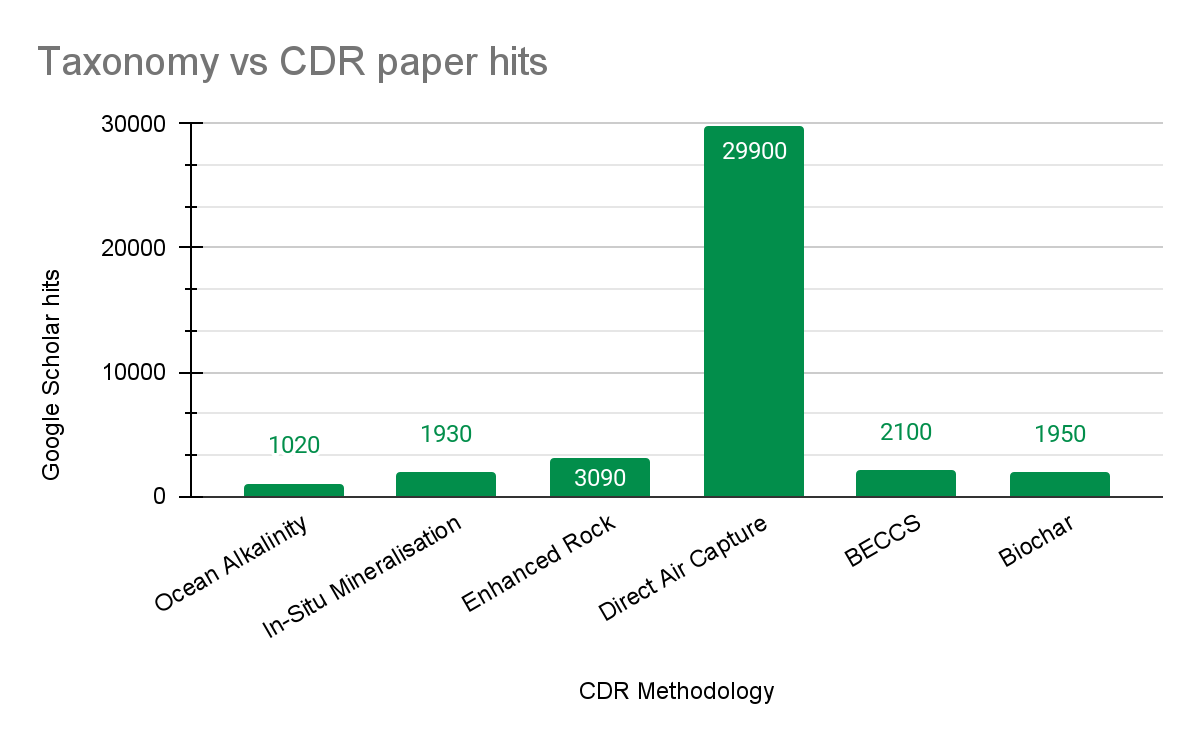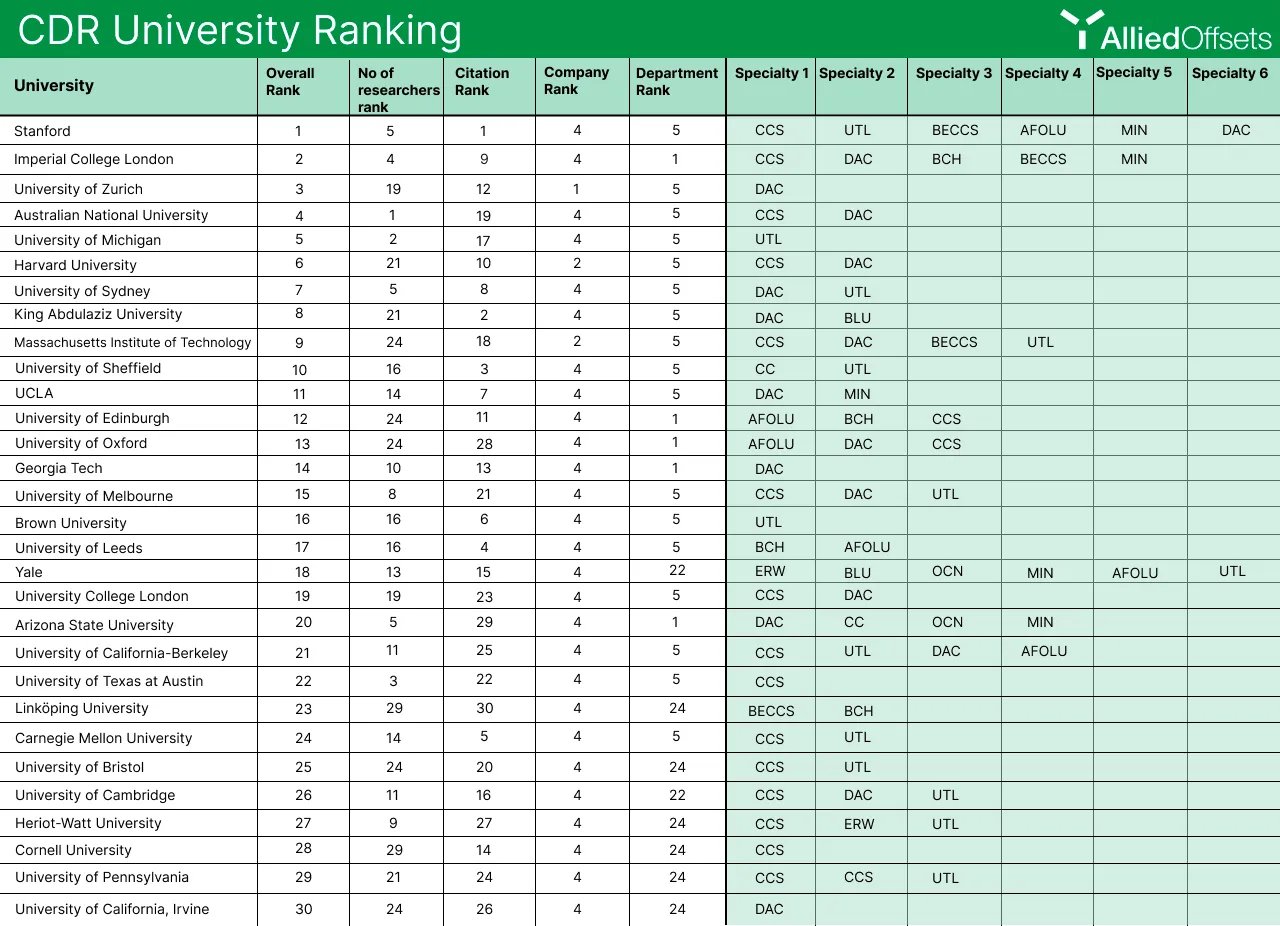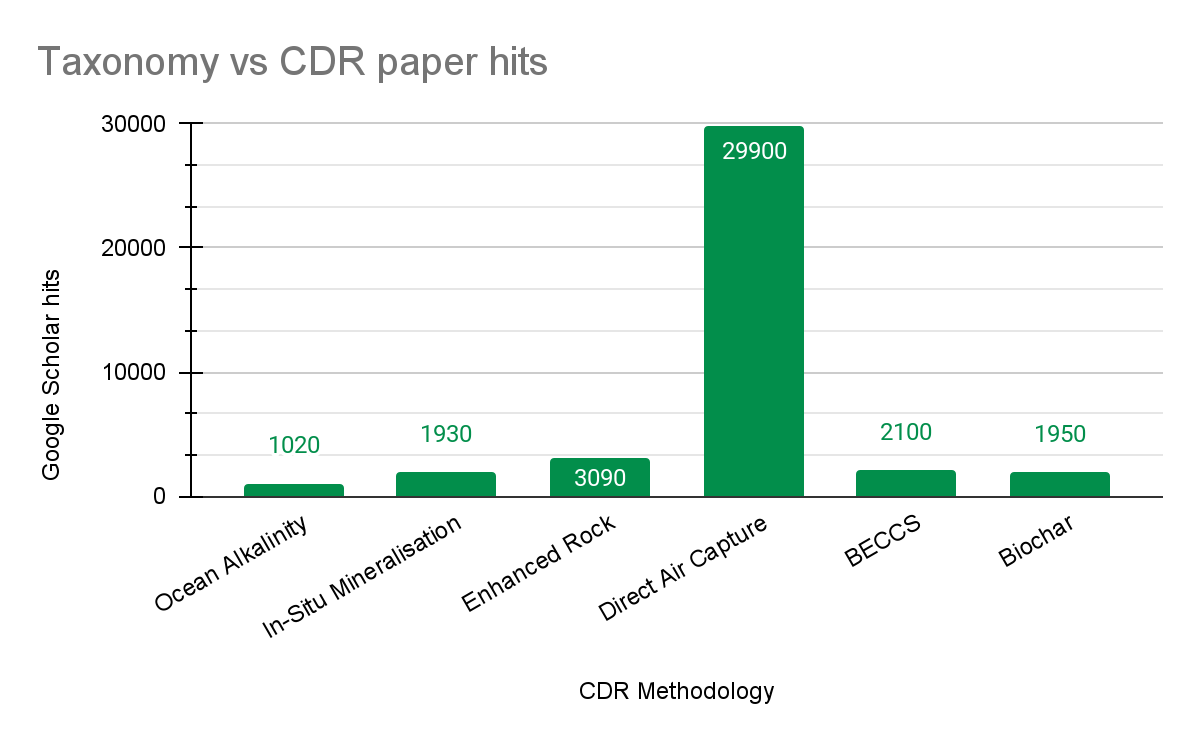This post was co-written by Livia Duprez
As we’ve previously written, carbon dioxide removal (CDR) is a key requirement for us to reach the 1.5 degree target by 2050, with the IPCC claiming that all roads lead to CDR.
As we’ve looked deeper into the CDR sector, we have identified the crucial role of academia in spearheading catalytic research into the space – both in terms of the theoretical underpinnings of various technologies, and in terms of acting as an incubator for early-stage ideas.
Therefore, we thought it would be informative to provide a ranking for universities that are the most involved in CDR. The aim is to help various actors in the space better understand which academic institutions are at the vanguard of CDR research and development.
Methodology and Criteria for Ranking
Before delving deeper into the methodology, we wanted to caveat the rankings by saying the methodology is a work in progress, and as the industry develops, so will our methodology. In other words – feedback is very much welcome!
Collating the initial pool of universities to rank
The initial pool of universities that were taken into consideration were collated through a blend of two methods, a top down approach and bottom up approach. The top down approach involved desk research on what universities’ engagement with CDR has been, while the bottom up approach involved quantifying the research outputs of various academic institutions.
More specifically, the top down approach involved parsing through the top 100 universities from the QS rankings and categorising whether they are pursuing CDR research at scale through an initiative, department or research group.
The common trend of universities was that they have three types of departmental arrangement when developing CDR in universities:
- First is an unfocused research centre. Many energy and environment departments, for example, have some ad hoc research on Carbon Capture and Storage or energy policy and perhaps a numerical model on engineering of CDR technologies. This is the minimum requirement for a university to be on our CDR list.
- Second is CDR-specific university partnership such as CO2RE, an initiative that joins seven UK universities in funding and promoting CDR research.
- Third is a CDR-focused, sole university department such as Georgia Tech’s DAC Center or UCLA’s Institute for Carbon Management.
In addition to the above, we also examined how much money university-linked companies had raised, as a gauge of the institution’s track record in helping to nurture successful CDR startups.
The bottom up approach involved searching for the top hits of papers by CDR methodology on Google Scholar. Figure 1 shows how many papers there are for each methodology googled. To start with, we only took the first 10 papers per methodology.

Each paper had between one and eight authors, whom we linked to universities that are working on CDR technologies.
We then merged the two databases together and created a list of the top 30 universities that are working on CDR. Note that we prioritized universities that research technology in this space — some focus on other aspects of CDR, which we did not include in this research. For instance, Columbia University’s CDRLaw, while very helpful, was not included in these rankings.
Ranking Methodology
The rank scoring was broken down into four sections:
- Number of researchers: 23%
2. Combined weighted academic citation performance: 30%
- All_citations
- Citations_since_2018
- H-index_all
- H-index_since_2018
- i10_index_all
- i10_index_since_2018
3. University company impact: 20%
4. University program: 27%
- Unfocused department
- CDR-focused partnership
- CDR-focused department or initiative
Each university was then ranked based on the scaled magnitude of these sub metrics above.
University Ranking
The results from the university ranking are as follows in Figure 2. The top five universities are:
- Stanford
- Imperial College London
- University of Zurich
- Australian National University
- University of Michigan

Each of the top five universities has a large number of faculty members and dedicated departments with a large number of citations — except ETH Zurich. Instead, Zurich has been ranked very highly due to its release of Climeworks which is the leading DAC company in the world with 108 patents, 10 plants and over 800 million USD invested into it which eclipses the rest of the competition.
University speciality has been weakly correlated with each of the universities and has been associated by taking a look at each of the websites. It is acknowledged that this is not necessarily indicative of all the research specialities within each university and there may be missing data points. The speciality tag is a first attempt at trying to map university specialities.
The taxonomy is as follows:
- BECCS — Bioenergy with Carbon Capture and Storage
- CCS — Carbon Capture and Storage
- DAC — Direct Air Capture
- UTL — Utilisation
- AFOLU — Agriculture, Forestry, and Other Land Use
- BLU — Blue Carbon
- OCN — Ocean Alkalinity Enhancement
- MIN — Mineralisation
- ERW — Enhanced Rock Weathering
For a more in depth explanation of CDR methodologies taxonomy, see here.
AlliedOffsets offsets have developed a preliminary university ranking system to inform stakeholders which universities are leading in CDR research and activity.
We look forward to feedback from the market! For more on our work in CDR, check out our latest CDR report here.
